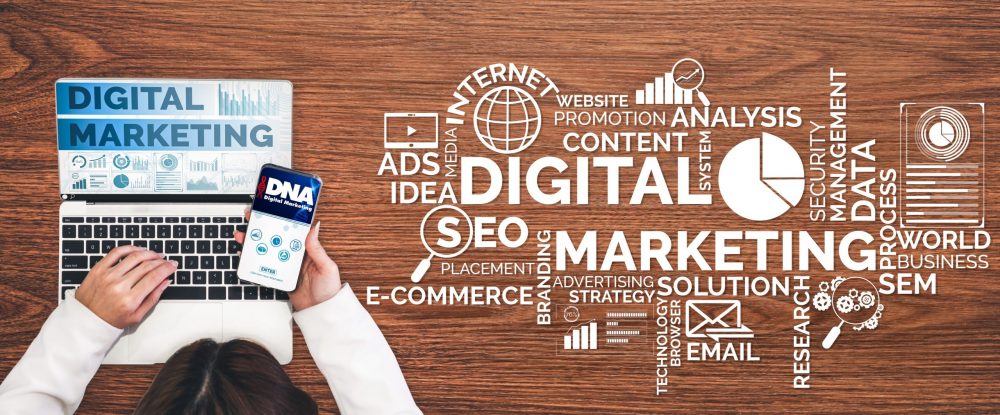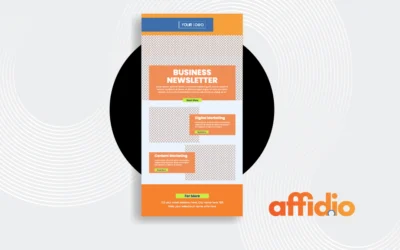Ever feel like your advertising budget is disappearing into a void? You spend good money on ad campaigns, but they just seem to vanish without a trace. It’s frustrating when your marketing messages don’t connect with anyone, almost like no one is listening.
You’re not alone in feeling this way. Many businesses struggle with their digital advertising and fail to reach the right people. The truth is, old-school, one-size-fits-all advertising is broken and a poor use of ad spend.
Today’s customers expect more from personalized marketing. This is where using the right personalized ad formats can change everything. You can finally stop guessing and start connecting by creating personalized ads that speak directly to your target audience.
Table of Contents:
- What Are Personalized Ads, Really?
- 1. Dynamic Creative Optimization (DCO)
- 2. Contextual Advertising
- 3. Retargeting (Also Called Remarketing)
- 4. Our Last Look at Personalized Ad Formats: Geographic and Demographic Targeting
- Data Protection and Building Trust
- Conclusion
What Are Personalized Ads, Really?
Think of a personalized ad as a helpful conversation, not a loud, generic announcement. These ads use customer data to show someone an ad they’ll actually care about. This approach is about being relevant and improving the shopping experience.
Instead of one display ad for everyone, you have countless versions of your ad copy. Each one is slightly different, built from data sources that reveal a person’s interests, online behavior, or even location. It’s a smarter way to manage your ad spend and achieve better results.
The goal is to be so relevant that your ad personalized to the user feels less like an interruption and more like a useful suggestion. Studies from McKinsey show that 71% of consumers expect personalization from companies. When you provide personalized experiences, they are far more likely to click and buy.
This process of ad personalization relies heavily on data collection. Information such as browsing history, search queries, and purchase history helps create a profile of the consumer. This collected data allows advertising platforms to make intelligent decisions about which ads to show.
Effective personalized marketing campaigns use this insight to foster brand loyalty. When customers feel understood, they are more likely to return. This directly impacts conversion rates and the overall success of your ad campaign.
1. Dynamic Creative Optimization (DCO)
Imagine an ad that assembles itself for every single person who sees it. That’s the power of Dynamic Creative Optimization, or DCO. It’s one of the most advanced personalized ad formats available today for digital advertising.
DCO starts with an ad template, which works like a basic frame for the ad creative. It then automatically pulls in different components like headlines, images, product information, and calls-to-action. These elements are selected based on the user data available for that specific viewer.
For example, one person might see a display ad for a blue shirt they just viewed, with a “10% Off” banner. Another person could see the same ad format but with a red dress they added to their cart, along with a “Free Shipping” offer. These highly personalized ads are created instantly, making each impression relevant.
The Technology Fueling DCO
How does this happen so quickly? The process is powered by machine learning and artificial intelligence. This technology, known as dynamic creative optimization, analyzes vast amounts of data in real time.
These data points can include the person’s location, their user behavior on websites they visit, the device they are using, and even the weather. A clothing retailer could use DCO to show ads for raincoats to people in rainy areas and sunglasses to those in sunny climates. The system’s creative optimization determines which combination of ad elements will achieve the highest conversion rate.
This goes far beyond just showing someone a product they clicked on once. DCO continuously learns from historical data and adjusts its strategy. It gets smarter with every ad personalized and served, constantly improving ad performance.
When DCO Is a Game Changer
While DCO may not be necessary for every business, it’s incredibly effective for some. E-commerce stores with large and diverse product catalogs are a perfect match for this technology. It allows them to create highly personalized marketing messages at scale.
Consider a massive online retailer like Amazon or a large home improvement store. It’s impossible to manually create a personalized display ad for every single product for every type of customer. DCO automates this work, showing thousands of personalized ad variations effortlessly.
Travel companies also see fantastic results from DCO. They can show ads for flights to a specific city to someone who was searching for vacations there. Alternatively, they might feature deals on beach resorts for a user who was reading travel blogs about tropical destinations.
2. Contextual Advertising
Have you ever read an article about new running shoes and then noticed a Nike display ad on the same page? That’s contextual advertising in action. It’s a simple, intelligent, and increasingly popular ad format.
The idea is to place display ads on websites based on the content of the page itself. The ad’s topic directly relates to what the person is already reading or watching. This contextual targeting creates a smooth and logical user experience.
This method differs from ads based on past browsing history. Contextual ads focus on a person’s current interest, not their past online behavior. It respects their mindset in that specific moment without relying on extensive data collection about their past.
Why Contextual is More Important Than Ever
For a long time, personalized advertising relied on cookies to track users across the web. But privacy concerns are growing, and this is changing the landscape of digital advertising. Regulations like the General Data Protection Regulation (GDPR) are giving people more control over their personal details.
Furthermore, tech giants are moving away from third-party tracking cookies. Google’s plan to phase them out of its Chrome browser is a major development. As Boston Consulting Group highlights, this shift is forcing marketers to adopt new strategies.
Contextual advertising is a perfect solution for this new, more private web. It doesn’t need to know who you are, just what you’re interested in right now. Because of this, many people see it as a less intrusive and more respectful way for ads to work.
Making Contextual Ads Work For You
Good contextual targeting depends on excellent analysis. Your marketing platform must understand the meaning and sentiment of a webpage, not just match keywords. Modern systems use advanced AI to analyze content deeply.
For instance, an ad for a new airline is great on a travel blog. But you wouldn’t want that same ad to appear next to a news story about a plane crash. Advanced advertising platforms can now understand this difference in context and sentiment, protecting your brand.
Using negative keywords is also vital for any ad campaign. This allows you to list topics and websites you want to avoid being associated with. It’s a crucial step to protect your brand’s reputation and ensure your targeted ads appear in appropriate places.
3. Retargeting (Also Called Remarketing)
You look at a pair of shoes on a website. You decide not to buy them. But for the next few days, you see video ads and display ads for those exact shoes everywhere you go online.
That’s retargeting, and it is one of the most effective personalized ad formats. The official name on the Google platform is remarketing, but the concept is the same. It’s all about reconnecting with people who have already visited your site or used your app.
These aren’t cold leads; they are a warm target audience because they’ve already shown interest. They often just need a little nudge to come back and complete a purchase. This makes it a powerful tool for boosting conversion rates.
Research confirms how well this works, showing that the click-through rate of a retargeted ad is often significantly higher than a standard display ad. A small piece of code, called a pixel, is placed on your website. When someone visits, this code drops an anonymous cookie in their browser.
Later, when that person visits other websites that are part of the ad network, the network reads the cookie. It then knows to show your ad to that specific person. It’s a simple but brilliant way to stay top-of-mind with your most engaged potential customers.
There are different ways to approach this. Standard retargeting shows the same ad to everyone who visited your site. Dynamic retargeting is more advanced and shows people ads for the specific products they viewed or added to their cart, creating unique and highly relevant ads.
4. Our Last Look at Personalized Ad Formats: Geographic and Demographic Targeting
Some of the most foundational forms of targeting are still among the best personalized ad formats. Showing ads to people based on where they live or who they are is a fundamental part of effective personalized marketing. This includes customer data like location, age, gender, and income level.
While not as flashy as DCO, it provides a solid foundation for any ad campaign. It ensures your message reaches a group of people who are more likely to find it relevant. This method is all about how personalized ads work on a fundamental level to target specific groups.
Geographic targeting can be incredibly precise. A local coffee shop can run an ad campaign that only targets people within a one-mile radius of its storefront. This strategy, called geofencing, is perfect for driving foot traffic to brick-and-mortar locations.
The Local Advantage
Local search is a massive part of modern consumer behavior. People are constantly searching for businesses “near me.” Geographic targeting lets your business be the answer to those real-time search queries.
You can adjust your ad copy based on location as well. An ad running in New York could have a different message than one running in Los Angeles. This local touch makes the personalized ad feel more trustworthy and familiar.
This works for national brands just as well as for small businesses. A major clothing retailer can use geographic targeting to promote winter coats in colder states while showing swimwear in warmer states. It’s a practical way to create personalized ads based on real-world conditions.
Going Beyond Basic Demographics
Demographics like age and gender are a great starting point, but the best results come from a layered approach. Combining demographics with other data creates even more effective personalized ad campaigns. Social media platforms are particularly good at this.
Many advertising platforms, especially on social media, let you target people based on life events. You can reach users who are “newly engaged,” “new parents,” or “recent college graduates.” This allows you to present an offer that fits perfectly with their current stage of life.
For example, a furniture store could target people who recently purchased a home. A financial planner might target young professionals who just got a promotion. The more you know about your target audience, the more effective your personalized ad can be, even extending to related channels like email marketing.
| Ad Format | Primary Data Source | User State | Main Goal |
|---|---|---|---|
| Dynamic Creative Optimization (DCO) | Real-time user behavior, product feeds, location, device. | Active Browsing | Show the most relevant product or offer automatically. |
| Contextual Advertising | Content of the current webpage or video. | Engaged with a topic | Align ads with the user’s current interest. |
| Retargeting / Remarketing | Historical data from your website or app visits. | Previous Visitor | Bring back interested users to complete a conversion. |
| Geographic & Demographic | Location data, age, gender, life events, income. | Member of a group | Reach a specific segment of the population. |
Data Protection and Building Trust
While personalized advertising is a powerful tool, it comes with great responsibility. Collecting data and using it for marketing requires a commitment to data protection and transparency. Consumer data is sensitive, and mishandling it can lead to a loss of trust and legal issues.
Regulations like the General Data Protection Regulation (GDPR) in Europe set strict rules for data collection. The general data protection principle is that users must give explicit consent before their personal details, like names and email addresses, are used. Any organization collecting data from EU citizens must comply with this data protection regulation.
This focus on data protection isn’t just a legal hurdle; it’s an opportunity to build brand loyalty. When you are open about how you collect and use user data, you improve the user experience. This transparency shows respect for privacy concerns and helps customers feel safe interacting with your brand.

Conclusion
The days of creating a single ad for everyone are long gone. Modern digital advertising requires a much smarter approach. You must connect with people on their terms, with marketing messages that feel like they were made just for them.
Understanding these different personalized ad formats gives you the power to do just that. Whether it’s the real-time relevance of DCO or the friendly reminder of retargeting, each ad format has its own strengths. The goal is to choose the right strategy for your specific marketing campaigns.
By using these personalized advertising strategies, you stop shouting and start having meaningful conversations with your customers. You build stronger relationships, increase your conversion rate, and create a marketing machine that truly works. These personalized ad formats help you give customers what they really want: a better shopping experience.



